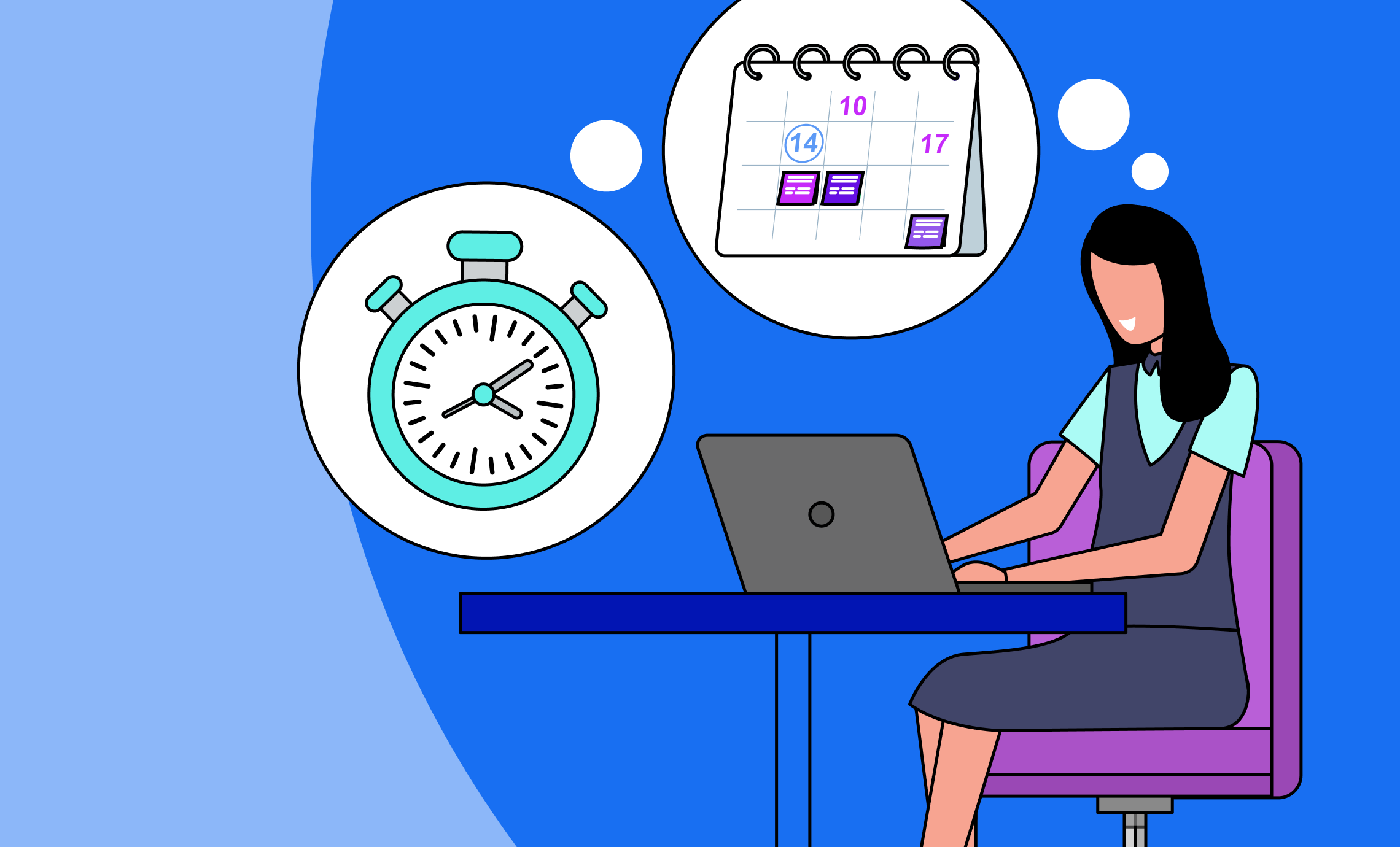Although nonprofit conference planning sounds very niche, it’s actually not much different from any other type of conference planning. The purpose and expectations are generally the same and the strategies to ensure you deliver are ones you’re likely already familiar with.
Whether you’re new to event planning or have just transitioned from a corporate to a nonprofit conference planning position, we’ve got tips to support your efforts and empower your success.
While we believe every event matters, the nature of a nonprofit conference can feel like there is more on the line, depending on the cause and urgency for financial support.
Here, we will review the importance of events for nonprofits by highlighting the opportunities to host conferences that are memorable, while making a difference.
From there, we will present an in-depth overview of how to plan a nonprofit conference, including planning, logistics, and promotion, and then wrap up with a comprehensive checklist and strategies to measure the success of your nonprofit event.
As you read, keep in mind that event management solutions exist to help you, specifically end-to-end content management software.
Planning a nonprofit conference is a considerable task, which you will manage with the right tools and team behind you.
For now, let’s take a look at why events can be so impactful for nonprofit organizations.
The importance of nonprofit event planning to nonprofit events
Well-executed events and conferences are valuable to most industries and organizations. However, when it comes to nonprofit events, the goals can feel loftier and the resources, particularly with respect to budget, scarcer.
When you think about most nonprofit organizations, even well-recognized names like Doctors Without Borders, World Wildlife Fund, or American Red Cross, have budgetary concerns, especially when it comes to transparency.
Nonprofit organizations depend on donations and philanthropic support in order to survive and fund their missions. In recent years, nonprofits have come under greater scrutiny with respect to how donations are allocated. Some have even made headlines for fraudulent financials and an overall lack of transparency.
Of course, corporations can and have fallen under similar disrepute. The nature of nonprofit structures and the expectation that donors can trust their monetary gifts are being put to the good use they intended means there is really no room for doubt or disgrace.
That’s why nonprofit events and conferences are so critical to these organizations.
Fundraising
Fundraising is an obvious goal of nonprofit events and is certainly where most make the bulk of their budgets. However, there is an awareness aspect that is arguably as important. Without awareness and connection to a wider audience, a nonprofit will never extend its reach. Therefore, never grow the financial support it depends on.
Balancing fundraising and awareness is key:
While the most well-known benefit of holding events for non-profit organizations is fundraising, another significant benefit is to build meaningful relationships. For non-profit organizations to maintain long-term support, it is important to continue pursuing opportunities to not only meet new people but connect with new businesses as well. It is becoming increasingly common for businesses to implement some sort of corporate philanthropy into their annual budget that can be used to support non-profit organizations in the area.
With this in mind, you might wonder what are the most popular nonprofit events and conferences?
The answer really comes down to the type and size of the nonprofit hosting the event and what the goal of the event is. Between formal galas to walk-a-thons, tournaments and auctions, there really is no shortage of nonprofit fundraising ideas to consider for your next event or conference.
No matter that type of event you choose, there are some common nonprofit conference planning goals and metrics to keep in mind.
According to Get Fully Funded, the ideal nonprofit event checks the following boxes:
- Raises 10-20% of your annual budget.
- Generates at least 4-5 times what you spend to host it.
- Brings in dozens of new donors (or renews existing ones).
- Deepens relationships and draws supporters closer to your mission.
- Attracts corporate sponsors.
- Draws volunteers easily.
- Sells out every year.
That’s a tall order but you can fill it with the proven nonprofit conference event planning strategies…
Planning a nonprofit conference
The planning phase of your nonprofit conference is the first phase and one you don’t want to rush through. A solid plan will help you negotiate any unforeseen issues faster and smoother than if you attempt to cobble things together as you go.
Part of this initial phase involves defining the objective of the event itself.
- Ask yourself guiding questions like:
- What is the purpose of this event?
- What is the organization hoping to achieve?
- What will make people attend and then extend additional financial support to the nonprofit?
- What type of event will be more appropriate than other event options and why?
These questions should be answered fully and then communicated clearly and frequently. The answers to your questions about your event’s objective should help establish the cadence of your event planning. With a clear objective in hand, the rest of the pieces should fall into place.
Conference planning team
Of course, they can’t fall into place without the right hands guiding them and this is where your team comes into play. You need to establish a crackerjack conference planning team who will represent a keen understanding of the objective and a clear-eyed vision for how to make it happen.
As seasoned event planners and conference managers, we love this old proverb: “If you want to go fast, go alone. If you want to go far, go together.”
Nonprofit conference planning is a long game, and you need the right people to help you get over the goal line.
With your dream team in place, the next order of business is establishing your event budget. Clarity is key here. You do not want to run into unexpected expenses or undercut what you’ll need as a financial resource to make the event a success.
Collaborate with your team on every expense, confirming estimates from vendors, while building in a cushion for emergencies.
Remember, the event should generate a minimum of 4-5 times what it costs to host it. You won’t realize that kind of ROI if you blow your budget before the event even gets off the ground.
With phase one complete, it’s time to guide your team into phase two: nonprofit conference planning and logistics.
Planning and logistics
Depending on the type of nonprofit event you plan to host, you need to evaluate the location and venue. If the event will be a black-tie gala, for example, you’ll want a venue that reflects the same polished, sophisticated aesthetic. In this case, you might consider an upscale hotel or a historic landmark, whether a beautiful library, theater or concert hall.
As you consider the event and venue from a thematic standpoint, make sure to keep practical points in mind:
- Can the venue accommodate the number of people you’re expecting?
- Is it easily accessible by various modes of transportation?
- Is there ample parking, particularly if most attendees will drive or carpool?
Once you’ve established the venue, you’ll need to collaborate with your team and reach out to vendors and suppliers for everything required to make this a nonprofit event to remember.
Again, the type of event will determine which vendors you’ll need to partner with. If we stick to the black-gala example, you’ll want the food and beverage to be of a high-caliber, along with any linens, tables, chairs, or any other items you’ll need to provide, based on what the venue does and does not accommodate.
Alternative events
On the flip side, if your nonprofit event is a walk-a-thon or road race, you’ll want to have tents ready to set up as water stations. Also, make sure to have first aid supplies and any weather-related items since your event will be outdoors.
Check in with your vendors and suppliers about their ability or willingness to accommodate last minute changes or cancellations, including any associated fees or other liabilities.
It can help to put yourself in the shoes of an attendee and mentally walk yourself through the event logistics to see what’s missing and anticipate any backup plan or plans you might need to develop and possibly implement.
When you and your team feel confident that you’ve considered every detail of your nonprofit conferences, it’s time to shift into promotion mode.
Without proper nonprofit event promotion, you won’t attract the number of attendees you need to make the occasion worthwhile or impactful.
Now that your event is planned, it’s time to circle up with your team and start planning the best ways to promote it.
Promoting your nonprofit conference
When it’s time to get the word out about your nonprofit conference, you should celebrate the fact that event technology has come a long way and can truly be transformative with respect to nonprofit event promotion.
Event technology not only strengthens your team’s efforts, it supports them with fast, efficient, and seamless solutions you’ll wish you thought of.
For instance…
Connected event technology solutions make planning your nonprofit event easy, especially when it comes to attendee engagement.
Starting with an event platform that was built to create meaningful interactions, should allow you to plan, promote and power your event, particularly if that platform is accessible via a mobile app that makes it possible for attendees to manage their own agendas, including the ability to engage with event content right on their smartphone.
Event solutions like this not only benefit event planners and attendees, they also enhance the experience for event sponsors by making collaboration easier.
Integrating technology
Integrating the right event technology makes it easier to extend your efforts on social media. You should absolutely promote your event on the nonprofit’s social media sites, and encourage your team to do the same. Get your sponsors and other event stakeholders on board by featuring them in social posts and encouraging them to share all social content about the event on their own platforms.
This not only promotes the event but also inspires engagement and communication between attendees, event planners, and sponsors.
Nonprofit event sponsors are the lifeblood of a nonprofit event, but keep in mind, as important as their support is to your event, your audience is also valuable to them. Each attendee represents an opportunity for your sponsors to extend their reach, expand their network and increase their ROI, relative to supporting your nonprofit conference.
So, leverage their presence and position at your event, accordingly, by giving them the visibility they want and the engagement they need to make their support worthwhile and, therefore, worth repeating in the future.
Day-of considerations and checklist
Quiet any nerves or jitters on the day of your nonprofit conference by focusing on day-of details. For instance, is your event technology in place to help your team manage and coordinate logistics?
Keeping your event logistics in a single space, such as Attendee Interactive’s robust platform, means you can maximize your staff, time, and budget even as your attendees arrive.
If you encounter any unexpected or last-minute changes, you can manage and share them immediately with staff and vendors, no matter where they are. These updates support attendee engagement because of their ability to instantly connect and communicate important event information that will only enhance your attendee experience.
Day-of event checklist
The day of your event should be exciting and can also turn stressful without a checklist to confirm that everything is in place and everyone is aware of their roles and responsibilities. You’ve dedicated ample effort and time to planning every last detail of your nonprofit conference.
7 step checklist
On the day, use the following checklist to feel confident that you can implement everything that you’ve worked so hard to plan.
- Connect with your team to ensure that everyone is clear about their day-of roles and responsibilities, including where they should be in order to address attendee questions and concerns.
- Check in with the venue to check that the space is ready, confirm room and speaker assignments, and communicate any last-minute changes or updates.
- Take the time to also check in with your vendors to confirm that they are on time, on track, and clear where supplies need to be delivered or set up before attendees arrive on site.
- Leverage your event technology to review any last-minute registrations, communicate with sponsors, and send any pertinent updates to attendees about your event logistics, including weather-related or parking information, changes to room assignments, shifts in speaker start times, etc.
- Announce the official start of your nonprofit event on social media and designate a team member to interact and engage with the comments, especially with anyone who posts a question about the event.
- Continue sending updates and live-stream footage of the event as it unfolds and assign a team member to be in charge of organizing post-event thank you notes to send to your attendees, sponsors and any other nonprofit event stakeholders.
Event management solutions
Remember to lean on your event management solutions throughout the day to interact in real time with your attendees and ensure a smooth and successful event experience for everyone involved.
After the last attendee has left, take the time to check in with your team and thank them for their hard work and dedication to make your nonprofit a success.
Speaking of success, now it’s time to measure just how bit of a hit your nonprofit event really was. Pull out your pre-event goals and plan to evaluate whether you made or missed your mark…
Measuring success of your event
In order to measure the success of your nonprofit event, you need to review what you planned to achieve against what you managed to pull off.
With respect to nonprofit fundraising, a major purpose of nonprofit events, you will have tracked the cost of registrations, sponsorships, and individual donations along the way and should have had a sense of how close you were to your financial goal before the event launched.
Now that it’s complete, a quick tally of last-minute registrations, on the day donations, and any proceeds from live or silent auctions, product purchases, and corporate matching will confirm whether you made or, better yet — exceeded your fundraising goal.
While that’s a very real and tangible metric for measuring the success of your nonprofit conference, you also need to take into account feedback from attendees, sponsors, and your team members who were on the ground working with you from the earliest planning stages.
Create audience-specific surveys and distribute them via your event management platform in order to review honest takeaways about every detail of your event. Schedule a post-event review with your team in order to celebrate the wins and create a plan for how to improve on any areas of weakness to help strategize your next nonprofit conference.
Nonprofit conference planning is a tall order for even the most seasoned event planner. That’s why event management software and its expert support team exists to help you manage every detail from start to finish.


